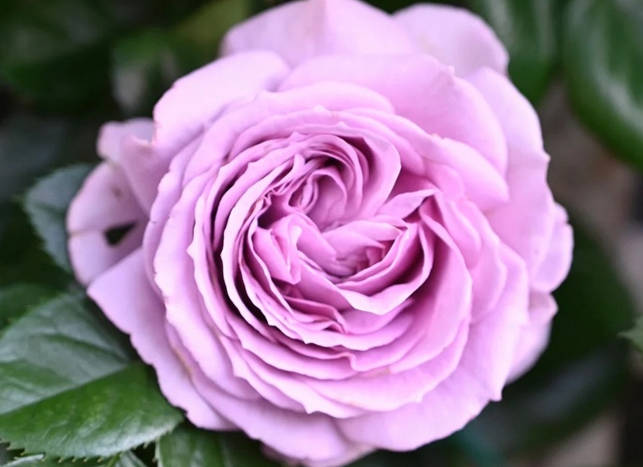Quick Silver Rose: Fragrance & Flower Size
Quick Silver is a climbing rose bred by Kordes in Germany, renowned for its distinctive lavender-purple flowers and exceptional multi-season blooming ability. The flowers of this rose are elegantly cup-shaped, with approximately 50 petals, a flower diameter of 8–10 centimeters, and a moderate fragrance. The plant can grow up to 250 cm in height, with vigorous growth, deep green leaves with a semi-glossy finish, and excellent disease resistance and heat tolerance, making it suitable for warm climates. The flower color of Quick Silver does not fade easily in high temperatures, it has good self-cleaning properties, and spent flowers naturally fall off, though the color may slightly lighten toward the end of the blooming period. Whether used as a flower wall, arch, or focal point in a courtyard, it stands out in the garden with its continuous blooming and captivating color.

1. Basic Information
- Common Name None
Height 250 cm (climbing) - Characteristics Heat-tolerant, strong disease resistance, prolific blooming, self-cleaning
- Flower Type Double-petaled, cup-shaped
- Flower Color Lavender purple, resistant to fading in high temperatures, but may lighten slightly toward the end of the blooming period
- Blooming Period Repeated blooming throughout the growing season
- Flower Diameter 8–10 cm
- Fragrance Moderate intensity
- Flowering Frequency ★★★★☆ (strong continuous blooming ability)
- Disease Resistance ★★★★☆ (strong resistance to black spot and powdery mildew)
- Cold hardiness: ★★★☆☆ (suitable for USDA zones 6-9, suitable for most regions in China)
- Heat tolerance: ★★★☆☆ (performs well in high temperatures, but requires partial shade in extreme heat)
- Origin: Germany (Kordes breeding)
- Propagation method: Cuttings/grafting
- Release year: 2004
- Suitable planting regions: Suitable for warm regions (such as southern China), requires appropriate protection in northern winters
2. Variety Characteristics
- Heat-tolerant and disease-resistant: Maintains good flowering condition in high-temperature environments, with strong resistance to black spot disease and powdery mildew.
- Continuous flowering: Repeated flowering across multiple seasons, with flowers visible throughout nearly the entire growing season.
- Good self-cleaning: Wilted flowers naturally fall off, reducing the need for manual cleanup.
Flower color variation
- Flowers start as lavender purple and gradually lighten in color over time, but do not completely fade.
Flowering performance
- Abundant blooms: Multiple flowers per stem, with each branch capable of producing multiple flowers.
- Rapid reblooming: Quickly sprouts new branches and flowers after pruning.
- Flower lifespan: Each flower lasts 5–7 days.
Growth habits
- Branch hardness: Moderate, requires support or trellising (suitable for arches, flower walls).
- Branching: Good, naturally forms a full plant shape.
Suitable Scenarios
- Ground planting: Suitable for creating flower walls, arches, and fence decorations.
- Container planting: Requires a large container (such as a deep pot) and a support structure.

3. Cultivation Methods
Light Requirements
- Full sun: At least 6 hours of sunlight daily; insufficient light may affect flowering.
Soil Mix
- Loose and fertile: Recommended soil mix of sandy loam + leaf mold + organic fertilizer, ensuring good drainage.
Water and Fertilizer Management
- Watering: Follow the principle of “water only when dry, and water thoroughly,” avoiding waterlogging.
- Fertilization: Apply balanced fertilizer every 2 weeks during the growing season, and increase phosphorus and potassium fertilizers before flowering.
Pruning Techniques
- Post-flowering pruning: Remove spent flowers to promote reblooming.
- Winter pruning: Remove diseased, weak, or crossing branches; vines should be appropriately trained.
Pest and Disease Control
- Powdery mildew/black spot disease: Maintain good ventilation and regularly spray with a 800-fold solution of Benlate.
- Red spider mites: Prone to outbreaks during hot, dry conditions; control with a 600-fold solution of Miticide.
